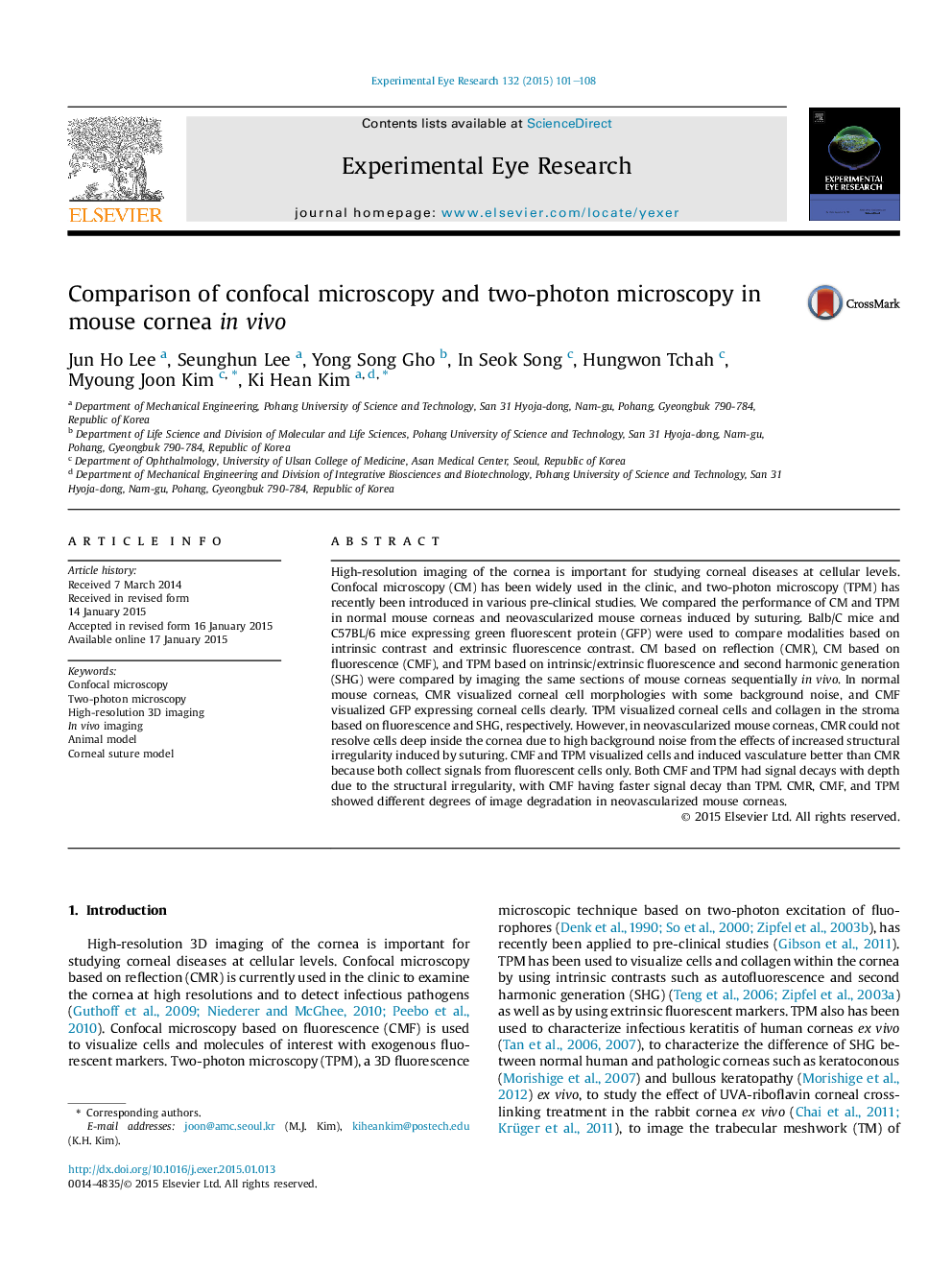| Article ID | Journal | Published Year | Pages | File Type |
|---|---|---|---|---|
| 6196627 | Experimental Eye Research | 2015 | 8 Pages |
â¢CM and TPM were compared in the TPM imaged the disease model better than CM due to its lower sensitivity to optical scattering by structural irregularities.â¢Both imaging modalities visualized individual cellular structures of the normal cornea with good contrast.â¢TPM imaged the disease model better than CM due to its lower sensitivity to optical scattering by structural irregularities.
High-resolution imaging of the cornea is important for studying corneal diseases at cellular levels. Confocal microscopy (CM) has been widely used in the clinic, and two-photon microscopy (TPM) has recently been introduced in various pre-clinical studies. We compared the performance of CM and TPM in normal mouse corneas and neovascularized mouse corneas induced by suturing. Balb/C mice and C57BL/6 mice expressing green fluorescent protein (GFP) were used to compare modalities based on intrinsic contrast and extrinsic fluorescence contrast. CM based on reflection (CMR), CM based on fluorescence (CMF), and TPM based on intrinsic/extrinsic fluorescence and second harmonic generation (SHG) were compared by imaging the same sections of mouse corneas sequentially in vivo. In normal mouse corneas, CMR visualized corneal cell morphologies with some background noise, and CMF visualized GFP expressing corneal cells clearly. TPM visualized corneal cells and collagen in the stroma based on fluorescence and SHG, respectively. However, in neovascularized mouse corneas, CMR could not resolve cells deep inside the cornea due to high background noise from the effects of increased structural irregularity induced by suturing. CMF and TPM visualized cells and induced vasculature better than CMR because both collect signals from fluorescent cells only. Both CMF and TPM had signal decays with depth due to the structural irregularity, with CMF having faster signal decay than TPM. CMR, CMF, and TPM showed different degrees of image degradation in neovascularized mouse corneas.
